TTAC Rewind: When TTAC Predicted GM's Fate
Take time away from your BBQ or the Indy 500 to check out a classic TTAC post.
Junkyard Find: 1985 Cadillac Cimarron
Way back in 2007, I kicked off the Down On the Street series (which was supposed to be a one-time reference to the title of a Stooges song beloved by me and the late Davey J. Johnson) with the first of what would turn out to be hundreds of interesting street-parked cars: a 1984 Cadillac Cimarron d’Oro. That led to something of a Cimarron obsession, and I’ve spent the past 15 years documenting every semi– intact Cadillac J-Body I find during my junkyard adventures. You’d think they’d all have been crushed by now, but such is not the case; I found this loaded Brown Overload Edition ’85 in a yard near Pikes Peak earlier this year.
Junkyard Find: 2011 Suzuki Kizashi SE AWD
Even though everything in the General Motors universe looked pretty shaky in 2009 and GM-affiliated Suzuki gave up on its attempts to sell Suzuki-badged cars in America in 2013, somehow an interesting new Suzuki midsize sedan managed to appear on our shores for the 2010 model year: The Kizashi. Just under 23,000 Kizashis were sold in the United States and Canada during the car’s 2010-2013 sales run, and I’ve found this clean ’11 in a yard just south of Denver, Colorado.
Junkyard Find: 2006 Buick Lucerne CXS
Remember, not many years ago, when American car shoppers could choose among dozens of new Detroit sedans? For the 2006 model year alone, General Motors offered 12 different four-door sedans, and that’s ignoring sub-models plus the sedans bearing the badges of (GM-owned) Saab and Suzuki. Today, there are three new GM sedans available here, and both of the Cadillacs are built on the same platform as the Camaro. The Buick Division got out of the US-market sedan game when the final 2020 Regal rolled off Opel’s line in Rüsselsheim, but the very last proper full-sized Buick sedan was Hamtramck’s own Lucerne. I found this Northstar-equipped first-year Lucurne in a Colorado Springs yard last month.
Junkyard Find: 2005 Pontiac Vibe, Gambler 500 Edition
Several hooptie-centric road rallies take place every warm season in Front Range Colorado, including the 24 Hours of Lemons Rally, the Rocky Mountain Rambler 500 Rally, and the Colorado Gambler 500 Rally. Teams will build crazy stuff— say, a Lincoln Continental Mark IV filled with three tons of engine-heated water or a gutted Volkswagen R32 converted to a doorless post-apocalyptic Astroturf nightmare— or just acquire some random cheap car, decorate it, and beat it half to death on Rocky Mountain fire roads. As you’d expect, many of these cars go right to the nearest boneyard when the rally is over, and I find quite a few of them during my junkyard travels in northeastern Colorado. Here’s the “Good Vibes” Pontiac Vibe, found in Denver over the summer.
Junkyard Find: 1985 Chevrolet Cavalier Wagon
Chevrolet built Cavaliers for close to a quarter-century, selling something like five million units. If you count the all the other J-body siblings sold around the world (including some really weird stuff), the extended Cavalier family is one of the largest in automotive history. Somehow, though, the once-ubiquitous 1982-1987 first-generation Cavaliers have all but disappeared from North American car graveyards; I’ve documented plenty of later Cavaliers during my junkyard travels, sure, but the early ones seem to have been crushed decades ago. Finally, here’s a reasonably straight ’85 wagon in a northeastern Colorado yard.
Junkyard Find: 2006 Pontiac Grand Prix GXP
From the time of John DeLorean’s money-printing 1962 Grand Prix through the model’s demise two years before the Pontiac Division itself got Old Yeller-ized by The General, Americans bought huge numbers of the sporty-looking Grand Prix. I’ve documented these cars in junkyards going back to 1969, but the LS-powered Grand Prix GXP of the Grand Prix’s final generation had eluded me… until now. Here’s one of those rare machines in a Denver-area yard.
Junkyard Find: 2001 Cadillac Catera
Junkyard Find: 2007 Pontiac G5 GT Coupe
While General Motors may have developed an alarming rod knock during the middle 2000s, culminating in Chapter 11 bankruptcy in 2009, The General’s Pontiac Division was shooting rods through the hood by 2007 or so. Oh, sure, the Solstice gave us all hope for the marque that gave us so many great machines over the decades, but few felt optimistic about Pontiac by the time the G5 hit showrooms for the 2007 model year. Here’s one of those first-year G5s, a Performance Red GT Coupe found in a Denver-area yard over the weekend.
Junkyard Find: 2005 Saab 9-7X Linear
The General had a healthy sales hit with the GMT360 platform in the 2002 model year, when the new Chevrolet Trailblazer, GMC Envoy, and Oldsmobile Bravada hit the showrooms. Since GM had devoured Saab in 2000 and most American car shoppers wanted trucks or truck-shaped machines by that point, it seemed to make sense to produce a Saab-badged GMT360 and extract some cash from that slice of the car-buying populace that craved both the rugged-lifestyle signifiers of a truck and the quirky-yet-sensible Swedish image of a Saab. The Isuzu-badged version— the Ascender— had had its debut for 2004, and so the Saab 9-7X appeared for 2005 (sadly, no Daewoo- or Vauxhall-badged versions were produced). Here’s a first-model-year 9-7X, found in a Denver self-service yard last week.
Chevrolet Electric Silverado A ZERO Production
Chevrolet’s Silverado electric pickup will be built at the Factory Zero assembly plant in Detroit-Hamtramck, Michigan, along with GMC’s Hummer EV SUV which will also be produced there, General Motors president Mark Reuss said today.
NHTSA Recalls GM Vans for Potential Fire Hazard
A warning was issued today to owners of 2021 Chevrolet Express and GMC Savana vans with 6.6-liter gas engines by the National Highway Traffic Safety Administration (NHTSA). If a battery short circuit were to happen, there may be a low battery voltage warning, the battery might die, or an engine compartment fire could take place.
GM Hypes Norway's EV Leadership
Actor Will Farrell describes Norway’s EV leadership in one of the more amusing Super Bowl commercials, and how General Motors is looking to change all that here at home.
2005 Chevrolet Cavalier, Last Gasp of the J Platform Edition
BrightDrop, General Motors' Shiny New Delivery Business
General Motors has rolled out BrightDrop, moving them further into the business of first-to-last-mile products, software, and services for delivery and logistics.
“BrightDrop offers a smarter way to deliver goods and services,” said Mary Barra, GM Chairman and CEO.
GM to Build EV Crossovers for Honda, Acura
Two Honda battery-electric crossovers will be built by General Motors in the next four years. A Honda will be built at a GM plant in Mexico, and an Acura alongside the Cadillac Lyriq in Tennessee.
Junkyard Find: 2010 Pontiac G6
When The General decided to eliminate the Oldsmobile brand— I’m still convinced that the main reason for the execution was the syllable Old in the marque’s name— the process took nearly a half-decade, with nostalgia-drenched “Final 500” editions of the last Oldsmobile models released with great solemnity. Even the ho-hum Silhouette minivan got a Final 500 version for its sendoff. When the Pontiac Division’s time came at the close of the 2000s, the 84-year-old marque was shoved out the door to stagger to an ignominious death, unloved and alone in a Michigan drainage ditch. Here’s one of the very last Pontiacs ever built, found in a Denver boneyard last month.
Junkyard Find: 2008 Pontiac Solstice
Quick, what was the final new Pontiac model introduced before the marque’s demise in 2010? The G3, a Pontiac-badged Chevy Aveo (itself a rebadged Daewoo Kalos, which makes The Final Pontiac first cousin to the Ravon Nexia R3). We remember a Pontiac model from slightly earlier in the chaos of mid-to-late-2000s GM much better: the Solstice, a mean-looking sports car that showed great promise but went down with the Pontiac ship in 2010.
I saw my first discarded Solstice last year in Colorado Springs, and now I’ve found this much cleaner one in Denver.
General Motors Not Giving a Damn in Three Photos
It wasn’t long ago that the Detroit Three were fending off the Japanese on home soil as the Land of the Rising Sun cranked out reliable car after reliable car for the American masses. Then came the Koreans — Kia and Hyundai — who brought over cheap metal to win market share but quickly turned around their quality and reliability woes and produced some of the best products in the industry.
So why is it that, after 108 years of building automobiles, General Motors still manufactures abysmal garbage?
Was The Government's Divestment of GM Stock Insider Trading?
Back in 2004, perfectionist homemaker and well known TV personality Martha Stewart was charged with insider trading. As presented, the facts in the case were simple. Martha owned stock in a medical research company called ImClone and, like a lot of people who invest in tech firms, she was hoping for a big payout when their product, a promising new cancer treatment, went on the market. Unfortunately, the FDA chose not to approve the drug and the value of the stock looked set to take a beating once the decision was announced. According to the charges initially brought against her, Martha and many of the company’s top executives learned of the FDA’s decision though their inside connections the day before it was publicly announced and were able to sell their shares before they crashed. That’s against the law and many of the people caught up in the scandal, including Martha who was convicted on the charge of making false claims to a federal investigator, ended up going to jail.
The Feds Didn't Kill Pontiac, I Did.
Photo courtesy of GMauthority.com
So I read earlier this week that Bob Lutz is saying that the US Government killed Pontiac. He says that GM had big plans to rescue the struggling brand with innovative, rear-wheel designs that included small performance cars that would have set the Germans back on their heels. Had these plans come to fruition, he hints, enthusiasts would have been busting down the doors and the brand would have quickly returned to good health. Sounds like new golden age for Pontiac was just around the corner. And it would have worked too, if it weren’t for those meddling Feds. That’s what Bob says anyhow, but I’m not so sure. The way I remember it, I had a hand in killing Pontiac, too.
Is Detroit's "Perception Gap" Dead?
According to our latest sales data, the Detroit Three have enjoyed something of a comeback relative to the “foreign” competition this year. And though it’s not clear how long that trend will last, the media is catching the Detroit-boosting bug again. The NYT’s Bill Vlasic epitomizes the mood, focusing on improvements in GM and Ford’s products in a piece titled American Cars Are Getting Another Look. Between IQS score improvements and anecdotal evidence of consumer interest in Ford and GM’s “gadgets” and “value,” Vlasic’s sidekick, Art Spinella of CNW Research, forwards an interesting theory for the death of the “ perception gap” (a construct he helped create, by the way):
Ford has become almost the ‘halo brand’ for G.M. and Chrysler. Because of Ford’s success, people are less resistant in general to considering all of Detroit’s products.
Well, that’s not the dumbest thing ever said about the destruction of the perception gap… but it sure is a head-scratcher. Did Nissan and Honda just spend the last several decades skating by on Toyota’s sterling reputation (RIP)? Still, it might be interesting to hear Ford’s perspective on all this.
Editorial: General Motors Death Watch 260: The End
Editorial: General Motors Death Watch 258: Stein X. Leikanger's "GM Politburo"
Editorial: General Motors Death Watch 257: Paul Niedermeyer's GM Obit
Editorial: General Motors Death Watch 254: All That You Dream
Editorial: General Motors Death Watch 253: Life During Wartime
General Motors Death Watch 251: Putsch Your Money Where Your Mouth Is
General Motors Death Watch 250: Interview With a GM Bondholder
Editorial: General Motors Death Watch 249: Cadillac Descending
General Motors Death Watch 248: The Chevy Volt Must Die
This is not what I expected. Sure, I got the bankruptcy bit right. Big deal. Better analysts than me were making that call back when I was playing with Corgi toys (another car company destined for the scrap heap). But I never thought Uncle Sam would nationalize GM. Ace commentator PCH101 will tell you it’s all in good fun: a temporary government intervention that gives taxpayers a shot at recovering some of the tens of billions [we shouldn’t have] spent keeping the zombie automaker alive. Or at least postpones GM’s inevitable dissolution for a less financially fraught finale. But I reckon politics will rear its ugly head, create a distortion field around GM’s car making business and kill any hope of GM surviving in any way, shape or form. The acid test: the Chevy Volt.
Clearly, the Volt is a born loser. For one thing, it’s too late. If GM’s electric/gas plug-in hybrid had appeared ten years ago, before the Toyota Prius created and satiated the market for econo-hybrids, the Volt might have had a chance. Second, it’s born under a bad sign: bankruptcy. Third, it’s arriving (if it ever arrives) at the wrong time. With the economy in the doldrums, gas prices in Davy Jones’ locker and new car prices about to tank (thanks to GM’s aforementioned C11), a relatively cramped $30K high mileage sedan boasting untested technology that requires consumer behavior modification (i.e., plugging it in) is, well, doomed. Which reminds me: the Volt doesn’t work.
The undaunted cheerleaders over at Autoblog (AB) posted a behind-the-wheel test of GM’s “plug-in savior.” Click on the video and you learn that the EV boosters were treated to an “80 percent plus representation of what [the Volt buyer’s] electric vehicle driving experience will be in the Chevy Volt.” The test—such as it wasn’t— completely missed the point. It’s not the “experience” that counts. It’s the utility. Can the Chevrolet Volt drive a full 40 miles on battery power only? Uphill? Upwind? In an arctic chill? In the desert heat? How long does it take to recharge? And how does it drive on gas power AFTER the battery discharges? GM’s Volt man proudly proclaims The General’s about to build 75 Volt prototypes. Big friggin’ deal. Show us the practicality. Now.
Better yet, don’t. There is no business case for this car. In fact, the Volt is a near-perfect representation of the kind of half-baked, reality-divorced, over-optimistic product development that drove the artist formerly known as the world’s largest automaker into Uncle Sam’s loving embrace. It’s a Hail Mary from a company that doesn’t have a prayer of dislodging the Toyota Prius from its stranglehold on environmentally conscious, financially frugal car drivers. Never mind the Volt’s plug-in aspect. ToMoCo is already working on a plug-in Prius. If the Volt proves that power cords are pistonhead paradise, the Prius will have one. AND it will work.
Did I mention the Honda Insight? By the time the Chevy Volt gets around to getting around (for real), the Insight will have mopped-up the few thousand American consumers who want a Prius, but prefer someone else’s version. Lest we forget, GM has been producing knock-offs that singularly fail to knock the competition off their sales perch for the last thirty years or more. Be they economy, muscle or luxury cars. Truth be told, in the last two decades (at least), GM’s only consistently competitive, consistently profitable vehicles have been trucks and SUVs. Uh-oh . . .
Common sense says whatever’s left of GM after bankruptcy needs to make as much money as possible to pay us back. To stop sucking-up billions of our hard-earned tax dollars to provide work for union workers, management idiots and federal bureaucrats. The American automaker openly, brazenly admits that they’re not going to make money on the Volt for a long time. [See video above.] An indeterminate amount of time, in fact. Meanwhile, the Volt will require further billions to [maybe] make its technology work. And then tens of millions more to market the damn thing.
So kill it.
If the goal is to return to profitability, post-C11 “good” GM should focus on building the most profitable vehicles left in their arsenal. Then they should pick a couple of vehicles that have the most potential to be profitable and figure out how to make them profitable. There’s no way that niche products can pass this stress test. CTS Sports Wagon? Dead. Chevrolet Volt. Gone.
Of course, a return to profitability is no longer GM’s goal. Since when does the US government care about profitability? Have you looked at the federal deficit lately? When President Obama outlined his reasons for rescuing Detroit, it was all about green jobs and a healthy planet. Not profits or ROI. Which means the Volt will not die. But GM will.
Editorial: General Motors Death Watch 247: Brandicide Won't Save GM
Editorial: General Motors Death Watch 246: Pontiac R.I.P.
Editorial: General Motors Death Watch 245: Core Competency
Editorial: General Motors Death Watch 244: Let There Be Light
Editorial: General Motors Death Watch 243: What's Old is New
Editorial: General Motors Death Watch 242: The Straw Man Speaks
Editorial: General Motors Death Watch 241: The Good, The Bad and The Ugly
General Motors Death Watch 240: 59 Days to C11
Editorial: General Motors Death Watch 239: Rick Wagoner's Resignation
General Motors Death Watch 238: No, No, Nadir
Editorial: General Motors Death Watch 236: The MSM Wakes Up to GM C11. Then Goes Back to Sleep.
Editorial: General Motors Death Watch 235: Where's Marion Robert Morrison When You Need Him?
Editorial: General Motors Death Watch 234: When?
It’s not a question of if GM will file for C11. GM blew past “if” a long time ago. By the turn of the century, the artist formerly known as the world’s largest automaker was doomed. Still, if they had greeted Y2K by mortgaging everything (à la Ford) and used the cash to buy out dealers and kill brands and ditch models and pay off the UAW and . . . nah. By the time The General re-launched their refreshed GMT900 SUVs in May 2005, the gig was up. By that point, GM should have been in C11. In this alternate universe, GM might have had enough cash—their cash not our cash—to make it out of bankruptcy. Now, I’m not optimistic. But one thing’s for sure: this Death Watch series is, like GM, on its last legs.
The filing’s timing has nothing to do with finances: profit and loss, cash flow, capital investment, depreciation, amortization, tax schedules, that sort of thing. The moment GM cashed its first government check, its fate ceased to be a matter of commercial reality. The corporation that was once the world’s largest company, the world’s most profitable company, had instantly and irrevocably reduced itself to nothing more (or less) than a political football.
The fact that Uncle Sam’s $13.4 billion federal loan didn’t even stretch to March 31st, never mind through the end of 2009 as promised by GM CEO Rick Wagoner, is neither here nor there. GM is now, for all intents and purposes, an off-shoot of the US government. And that means GM’s on government time.
Hence the reason why GM isn’t in receivership, despite failing to satisfy the loan’s conditions (UAW concessions, a massive debt-for-equity swap amongst existing bondholders and a credible viability plan). Never mind. We’ve got a presidential task force. Meanwhile, how about a bridge loan to take GM from their current bridge loan to . . . another bridge loan.
No surprise there. You can’t very well create a new layer of federal bureaucracy without giving it a chance to do something. Witnesses must be called, lawyers consulted, inter-departmental advisors indulged, papers perused, confabs held, policy statements written, copies circulated for approval, etc. And that’s after the appointees are appointed, assistants hired, stationary commissioned, website created, budgets drafted, alliances formed, careers fortified, etc.
If the Presidential Task Force on Automobiles simply cried “basta!” and called the loan, they’d have nothing to do. A federal bankruptcy judge or judges would take over. What would be the point of that?
In fact, doing the right thing would be the exact wrong thing, politically. First, it would make the Obama adminstration seem impulsive. They just got started! Second, it would make the Obama administration seem weak. It would be a throw-in-the-towel tacit admission that the economy is in even worse shape than they won’t admit it is, and there’s not a damn thing they can do about it. Third, a C11 filing would require even MORE money from Uncle Sam than GM is currently requesting.
I’m not talking about a GM C11’s impact on the economy. Nor am I referring to the Bloomberg report pegging the legal costs of GM’s bankruptcy at a cool billion dollars. Truth be told, if the federal government is going to bankroll The General’s bankruptcy—and how could it NOT provide debtor-in-possession (DIP) financing given that there’s this presidential task force occupying precious DC real estate—the real cost of ressurrecting GM will finally emerge.
Remember: no matter how well Uncle Sam puts Humpty Dumpty back together again, the feds will have to keep GM going until the economic recovery. A year? Two years? I’m thinking $100 billion. Easy.
A USA Today poll released today reveals that 75 percent of Americans are now against loaning Detroit automakers more tax money. Just two months ago, 61 percent of the public were pro-bailout. Consider the magnitude of that swing and imagine how John Q. Public will feel if the true cost of keeping GM in the game were suddenly revealed.
How and when will that number swing back towards federal intervention for Detroit? It can’t and never. Uh-oh. Rock, GM. Obama, hard place.
Politically, there is but one answer: continue the bailout buffet diet of little (in some bizarre sense of that word) and often. In other words, “loan” GM just enough operating cash to remain in their current, zombie state. At least for now. At least until March 31st.
By then, the American public may move beyond not wanting to support GM to not giving a damn. The feds can then slip and drip: let General Motors slip into C11 without much public outcry, and then continue the drip feed under DIP.
Here’s the real bottom line: with or without DIP, GM will continue to be tied to the feds with an umbilical cord made of piano wire. The worst is yet to come.
General Motors Death Watch 233: Rick Wagoner is a Secret Alien
Editorial: General Motors Death Watch 232: The Chevy Corvette Must Die
GM Death Watch 231: A Tale Of Two Chevys
As the maximum era draws to an end at GM, there’s no shortage of praise for the Bob Lutz-led product turnaround. Cars like the CTS, Lambda CUVs and the Chevy Malibu are said to represent a new day in quality and design for the General. And without a doubt, they are all consistently better cars than GM has made for years. But for all their accolades and fawning reviews, these vehicles actually represent a relatively small fraction of GM’s offerings. Though marketing executives wail from the Renaissance Center that consumers aren’t understanding the alleged sea change in GM products, there are still more GM vehicles you can ignore (to borrow GM’s marketing phrase) than you can’t. Automotive atavisms occupy GM’s entire lineup, but the contrast between Chevrolet’s D-segment offerings, the Malibu and Impala tells the whole story. And it isn’t pretty.
It’s no coincidence that the Malibu is, above all others, the poster child for a GM turnaround. Its clean styling and high-quality interior give it an edge in the first impressions game that GM hasn’t enjoyed in decades. More importantly, it brings an impression of actual effort to the crucial mid-sized segment, a category that was long ago ceded to the CamCord legions by such W-bodied luminaries as, well, the Lumina.
But the W-body and its parts bin of horrors lives on. Though the “Malibu Classic” has gone to the great rental lot in the sky, the Impala remains a rolling reminder of a time when the term “GM midsized” meant cheap, bland and unreliable. GM’s current fleet queen boasts a shake, rattle and roll interior, with all the aesthetic delights of a cheap pocket calculator. And let’s not even discuss the old-school wallow that the Impala calls handling. Place the Impala and the Malibu side-by-side and the contrast in impressions couldn’t be greater.
And yet, the Impala sells far better than the perception gap-changing ‘bu. In fact, the Impala is by far GM’s best selling car, with 265,840 sales last year. That’s more than the entire Pontiac car lineup, and nearly the volume of Saturn, Buick and Cadillac cars put together. The Malibu is well behind with 178,253 units sold last year, despite relentless hype and giant ad budgets.
Of course, none of this should come as much surprise to the experienced GM watcher. It is, after all, a long-standing GM tradition to offer long-outdated models as a cheap fleet sale booster. But not only is GM supposedly trying to cut back on fleet sales, unlike the Classic before it the Impala actually sells at retail too. Oh yeah, and GM has been propping up Malibu sales with fleet deals as well.
So while publicly denouncing fleet sales, GM is keeping its fleet queen in the public eye by keeping the roomier Impala’s retail price relatively close to its marquee Malibu. So when shoppers arrive at a Chevrolet dealership to look at the mid-sized offerings, both sides of General Motors are there to see: the sleek (but snug) Malibu or the roomy but dismally old-school Impala. And if you work with the best fleet percentages we have for 2008 (about 50 percent of Impala sales and about 33 percent of Malibu sales went to fleets), it turns out that more people are buying Impalas, even at retail.
This raises a number of interesting questions about the value of GM’s supposed product-led turnaround. If the Impala sells better than the Malibu at retail, despite its aged underpinnings and staid looks, was Bob Lutz’s enormous paycheck and frequent outbursts worth the investment? Class-competitive styling, interiors and platforms cost a considerable amount of money, and based on the numbers it seems that loyal GM customers aren’t particularly swayed by them. For all its accolades, the Malibu looks to be not only less popular than its fleet-flooding cousin but less profitable too.
And so we arrive at the real question: why do GM customers seem to prefer the aged and uncompetitive Impala to its acclaimed Malibu? In his hilarious address to the White House Press Club, Stephen Colbert quipped that President Bush’s 30 percent approval rating meant that though the metaphorical glass is only two-thirds empty, the last third is usually backwash. And the implication that Bush’s constituency represents all the ugly stereotypes of American culture also applies to GM’s midsized predicament. After decades of foisting uncompetitive cars on the American public, choosy shoppers no longer even consider GM a source for high quality vehicles, a fact proven by KBB’s 2008 “most researched” list.
And as long as Impalas and Malibus share lot space, GM’s cries of “perception gap” will continue, as the brand image is confused by two such divergent approaches to the midsized segment. The Malibu is fighting an uphill battle to convince now-loyal Toyota and Honda customers that the bowtie brand can offer quality, and sales momentum isn’t helping. And with GM pricing a fleet version of the Malibu considerably cheaper than the Impala, it’s also only a matter of time before that model loses its luster to the fleet residuals curse. And since its sales and profitability are already worse, the damage has already been done.





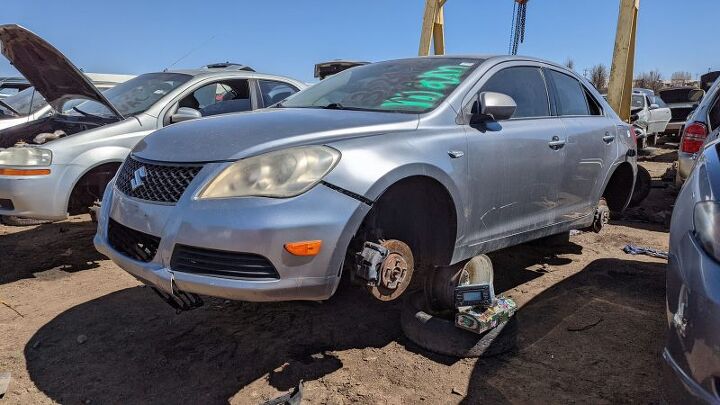


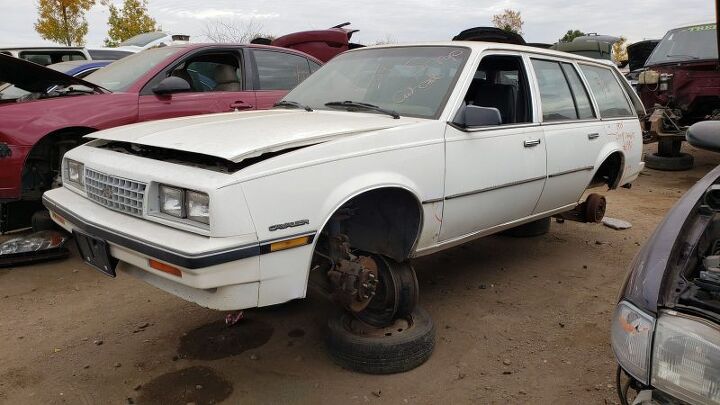
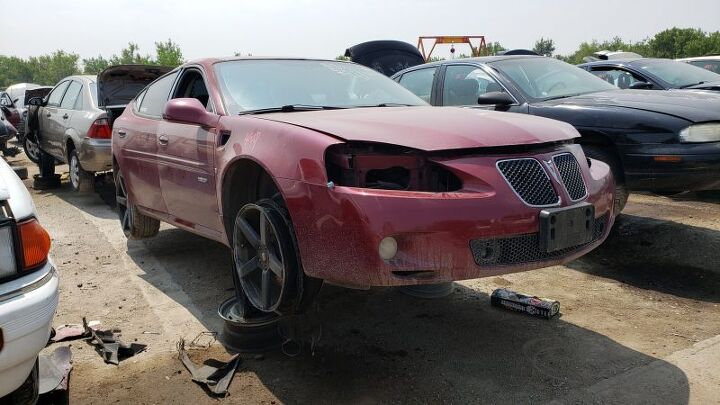
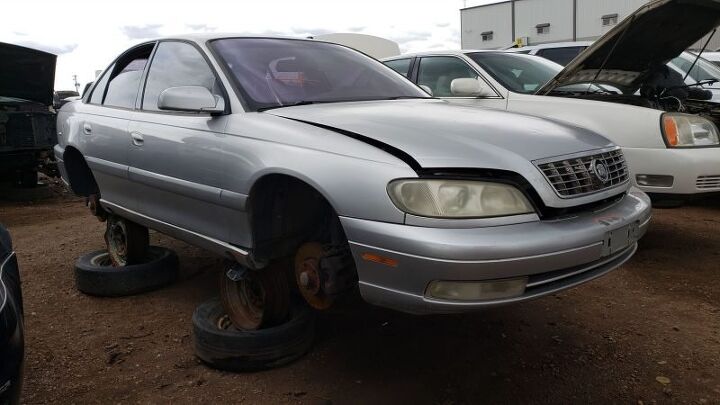








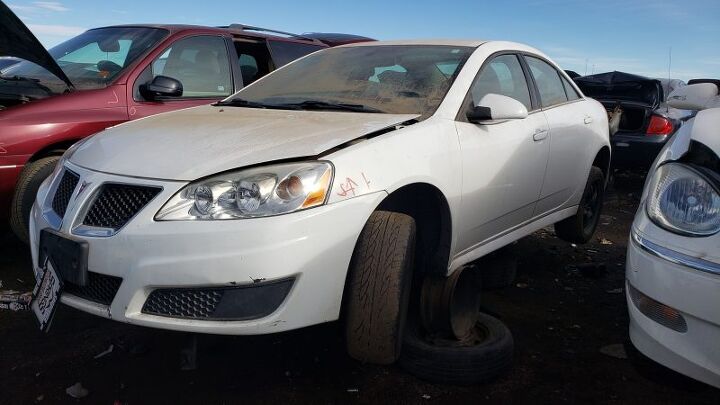





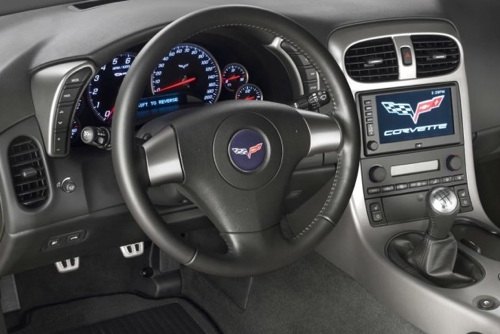





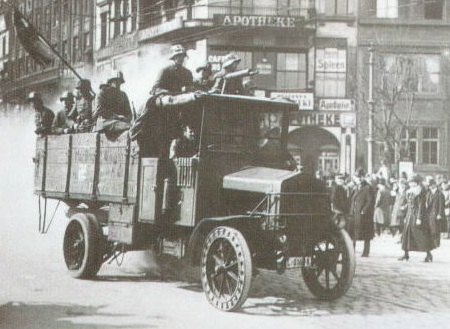

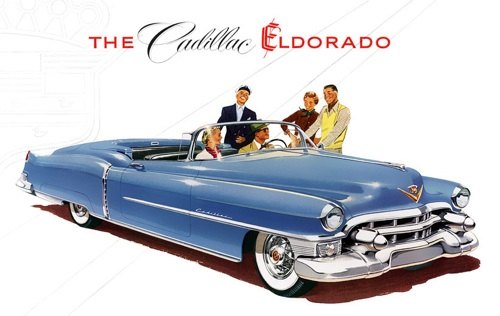
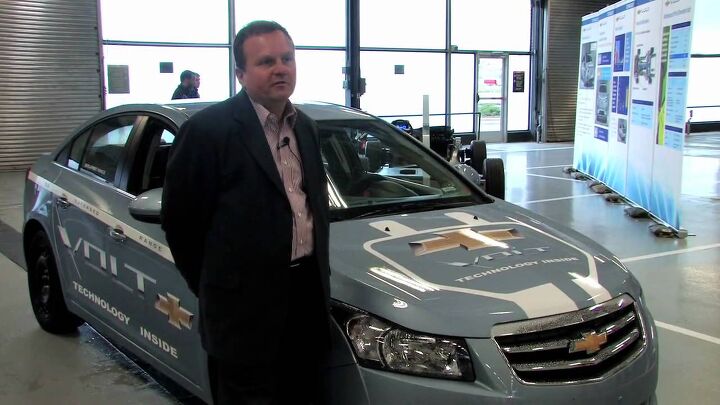

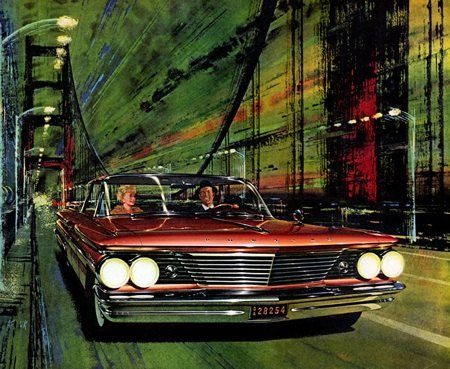
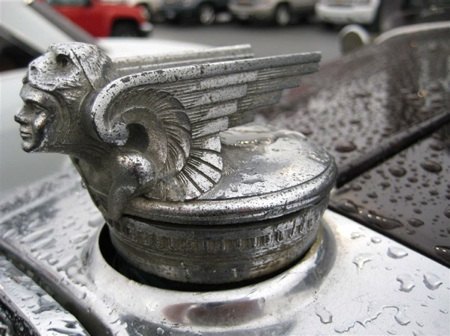















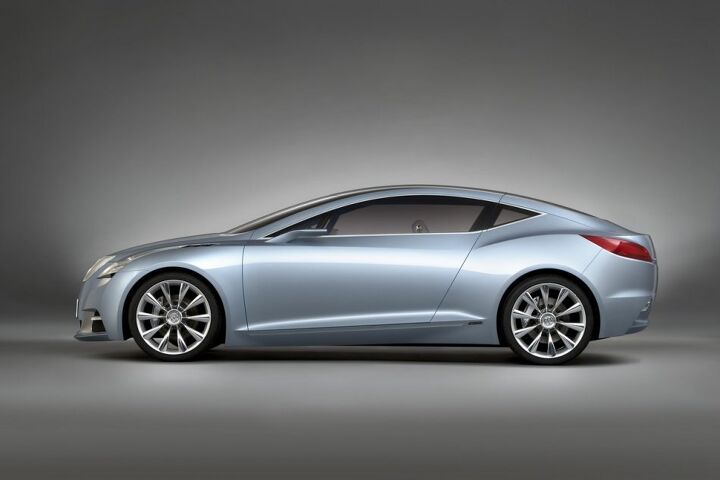



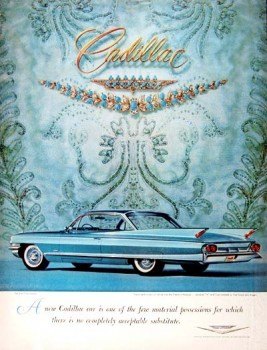

















Recent Comments